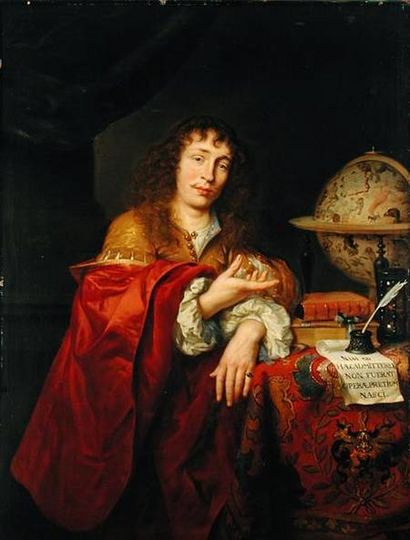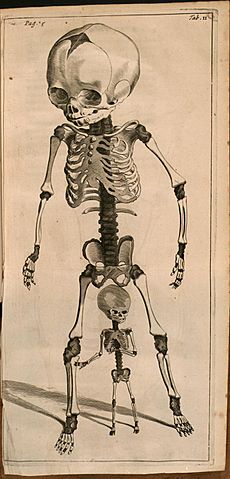Theodor Kerckring facts for kids
Theodor Kerckring (also known as Dirk Kerckring) was an important Dutch doctor and scientist. He was born in Amsterdam in 1638 and passed away in 1693. He was known for his work in anatomy, which is the study of the body's structure, and for his interest in chemistry.
Contents
Early Life and Education
Theodor Kerckring grew up in a well-known family in Amsterdam. His father, Dirck Kerckring, was a merchant and a captain for the Dutch East India Company. His mother, Margaretha Bas, was the daughter of a former mayor of Amsterdam.
In the 1650s, Theodor went to the Latin School in Amsterdam. One of his teachers was Franciscus van den Enden. Interestingly, the famous philosopher Benedictus de Spinoza was also a student there at the same time. Later, Theodor studied medicine at Leiden University. He learned from a respected professor named Franciscus Sylvius. Around 1660, a painter named Jurgen Ovens painted a portrait of him.
Family Life and Connections
Theodor Kerckring stayed friends with his old teacher, Franciscus van den Enden. In 1671, Theodor married Van den Enden's daughter, Clara Maria. To marry her, Theodor became a Roman Catholic. Clara Maria helped her father teach Latin. There's a story, though it might not be true, that Spinoza was in love with Clara Maria, but she didn't feel the same way.
Medical Career and Discoveries
Before 1675, Theodor Kerckring worked as a doctor in Amsterdam. After that, he traveled around Europe. In 1678, he settled in Hamburg. He invited his old friend, Niels Stensen, to join him there. Stensen was a leading anatomist who had become a Catholic priest. Kerckring helped Stensen find a new job in Hamburg. They both shared their ideas and experiences.
Kerckring is famous for his book called Spicilegium anatomicum. This book was like an atlas of the human body. It included his observations from patients, interesting medical cases, and things he found during autopsies (examinations of bodies after death).
He is also known for describing two specific parts of the body:
- Kerckring's ossicles: These are small, extra bones that sometimes appear in the back of the skull (the occipital bone) in babies before they are born.
- Valves of Kerckring: These are special folds inside the small intestine. They help the body absorb nutrients from food more effectively. They are also called "Kerckring's folds" or plicae circulares.
Theodor Kerckring even used a microscope that was made by his old schoolmate, Spinoza, for his studies.
Publications
Theodor Kerckring wrote several books about his medical and anatomical findings. His most famous work was Spicilegium anatomicum. He also wrote a commentary on an old book about a chemical substance called antimony.



